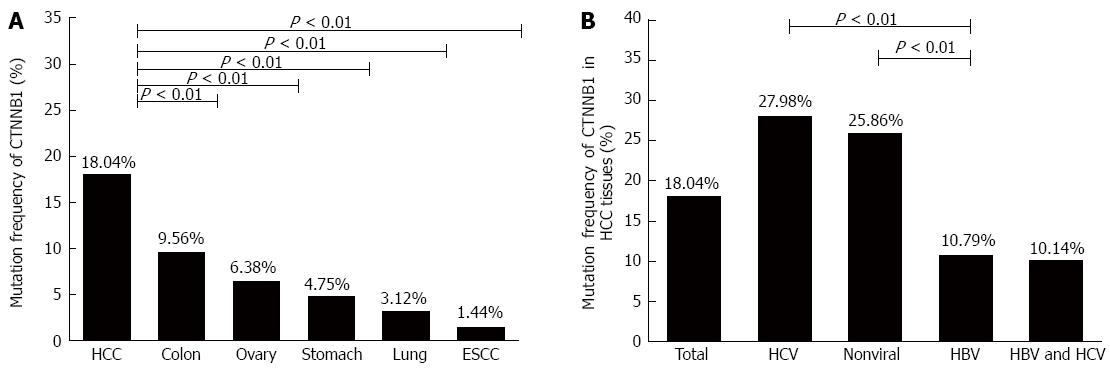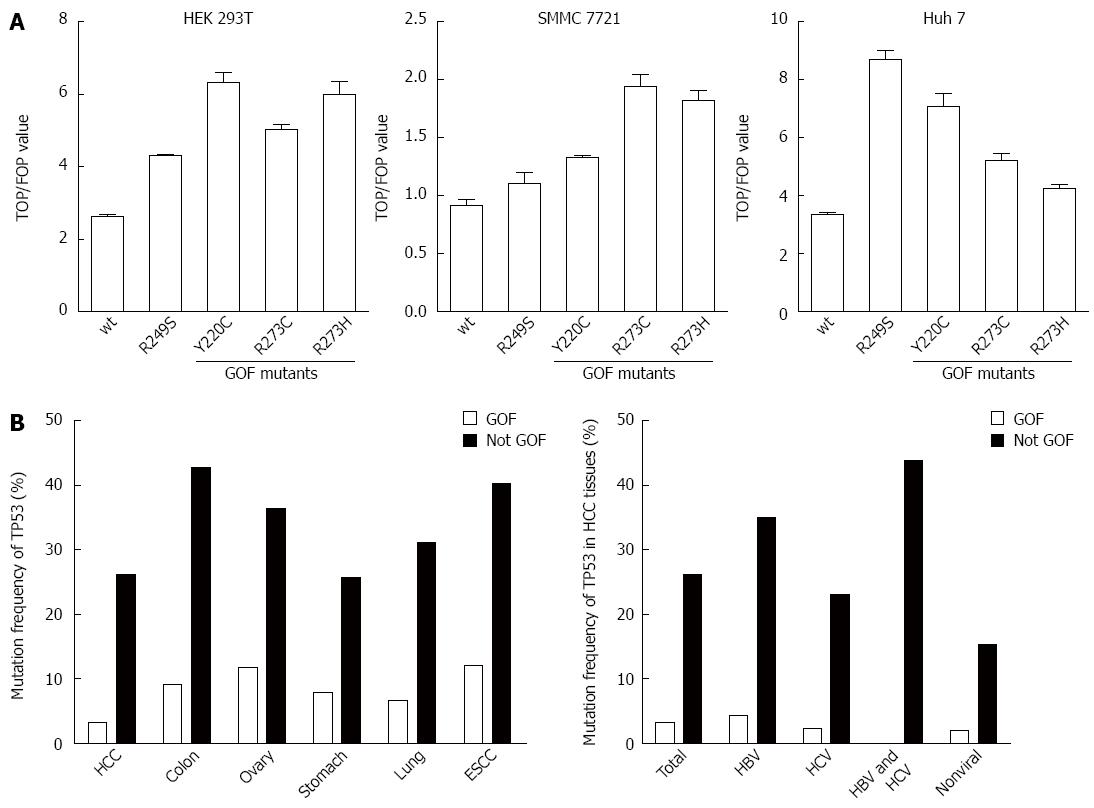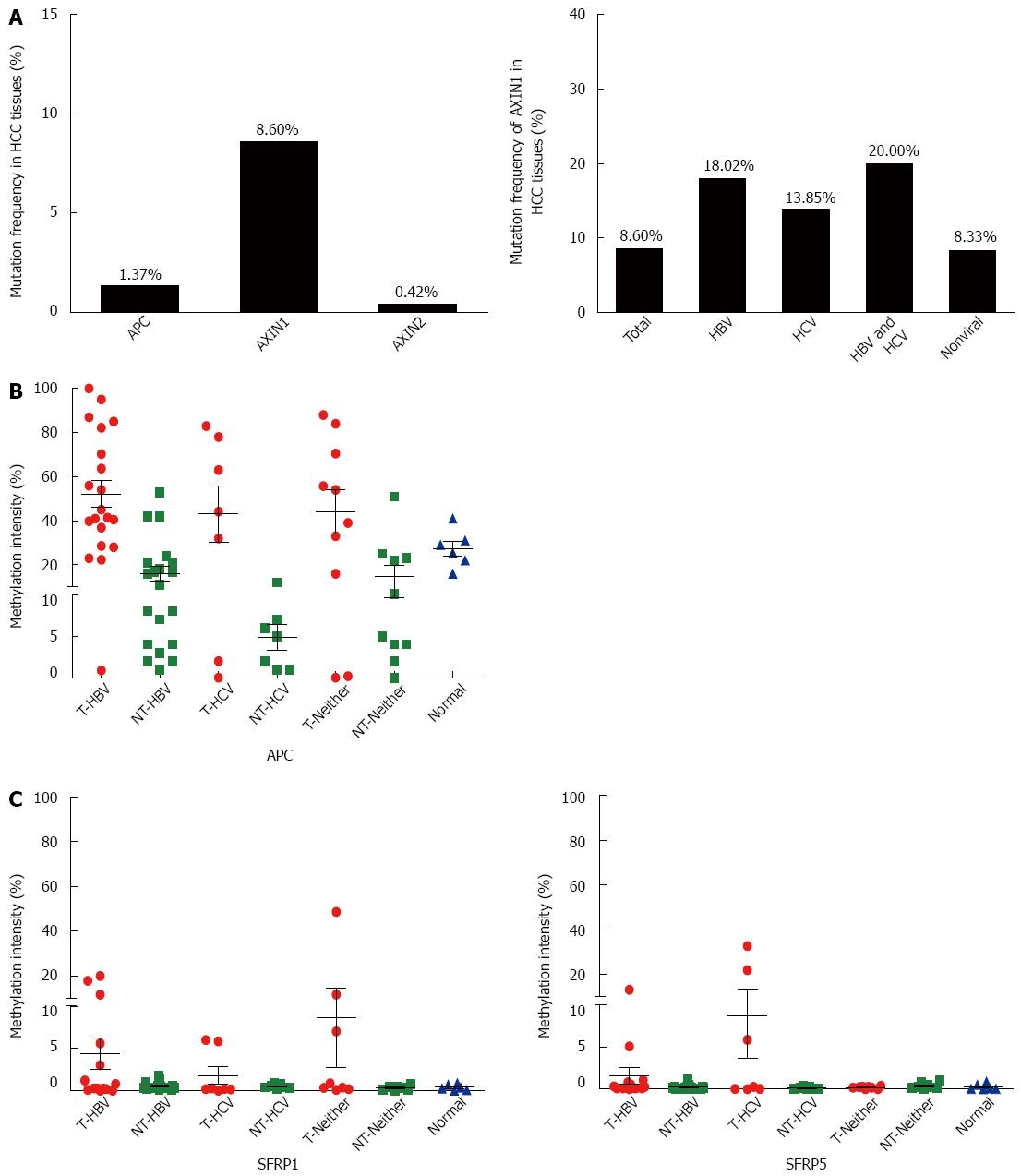Copyright
©The Author(s) 2015.
World J Gastroenterol. May 28, 2015; 21(20): 6317-6328
Published online May 28, 2015. doi: 10.3748/wjg.v21.i20.6317
Published online May 28, 2015. doi: 10.3748/wjg.v21.i20.6317
Figure 1 CTNNB1 mutation rate in tumors based on the information collected from COSMIC database.
CTNNB1 mutation rates in A: Different human tumors; and B: Hepatocellular carcinoma tissues with different risk factors. ESCC: Esophageal squamous cell carcinoma; HBV: Hepatitis B virus; HCV: Hepatitis C virus; HCC: Hepatocellular carcinoma.
Figure 2 TP53 GOF mutation does not likely contribute to the aberrant activation of Wnt signaling.
A: TP53 GOF mutants activate Wnt signaling in vitro; B: TP53 mutation rate in different tumors and different etiologies of HCC. Although TP53 mutation was commonly detected in HCC, GOF mutation was a rare event in HCC with different etiologies. ESCC: Esophageal squamous cell carcinoma; GOF: Gain-of-function; HBV: Hepatitis B virus; HCV: Hepatitis C virus; HCC: Hepatocellular carcinoma.
Figure 3 Frequent genetic/epigenetic aberrations of the negative regulators in Wnt signaling in hepatocellular carcinoma.
A: AXIN1 was frequently mutated in HCCs with different etiologies; B: APC promoter hypermethylation was frequently found in HCCs with different etiologies; C: Neither SFRP1 nor SFRP5 was frequently hypermethylated in HCCs with different risk factors. HBV: Hepatitis B virus; HCV: Hepatitis C virus; HCC: Hepatocellular carcinoma.
- Citation: Ding SL, Yang ZW, Wang J, Zhang XL, Chen XM, Lu FM. Integrative analysis of aberrant Wnt signaling in hepatitis B virus-related hepatocellular carcinoma. World J Gastroenterol 2015; 21(20): 6317-6328
- URL: https://www.wjgnet.com/1007-9327/full/v21/i20/6317.htm
- DOI: https://dx.doi.org/10.3748/wjg.v21.i20.6317















